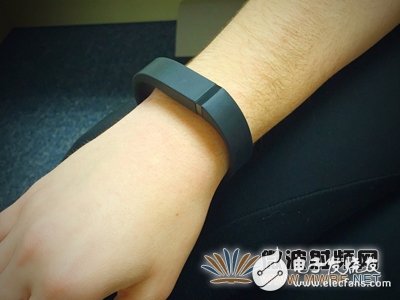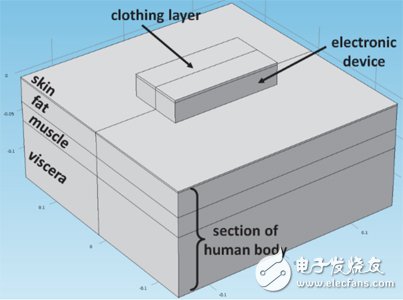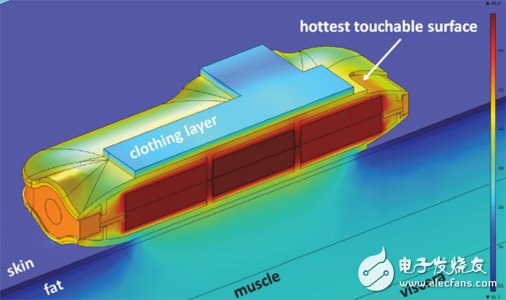The popularity of consumer and medical wearable technologies is increasing year by year. This type of equipment is intended for continuous use. If the design is unreasonable, the heat generated by the equipment can cause malfunction and possibly burn the equipment. To avoid harm to the equipment user, the effect of heat transfer must be taken into account when designing the product. The simulation capabilities of COMSOL MulTIphysics make it possible.
Wearable Technology: Use and PrecautionsLast month's International Consumer Electronics Show (CES) showcased various technology innovations to be launched this year. Wearables is one of the focuses of this conference, which includes the latest developments from wristbands for tracking fitness conditions to smart watches. Among the new invention demonstrations is a skin patch that can monitor the amount of sunlight and prevent UV damage; a clothing accessory that can alert emergency contacts; and a baby sock that can track the vital signs of babies. It will help prevent sudden infant death syndrome (SIDS).

Figure 1. The fitness tracker is a more common wearable technology application designed to monitor your physical activity throughout the day.
With the continuous development of wearable technology, there are a series of problems that need urgent solution. For example, these devices will continue to collect and store our personal data and should therefore be extremely secure. Hackers have been trying to steal such data. They also try to control wearable medical devices that are responsible for health monitoring and drug distribution. This will have serious consequences. Another issue that needs to be considered is the safety of the equipment. If these devices, which we should have worn for a long time, overheat, they may cause burns.
By studying the heat transfer within the device and its effects on human skin, we can optimize wearable technology for safer use. Thoratec's research team used COMSOL MulTIphysics and heat transfer simulations to study heat transfer in electronic devices after prolonged wear. Let us now analyze carefully...
Safely wearable electronic devicesIf the wearable electronic device's direct contact surface with the skin becomes hotter than other surfaces, it will begin to transfer heat to the skin until the temperature drops to the same level as the other surface. After a period of time, the skin may be injured due to high temperatures. As early as the 1930s and 40s of the 20th century, related research had established that the skin would be injured when the temperature reached approximately 44°C. (You can find more information in the References section at the bottom of this research paper.)
To avoid skin damage, electronic devices must meet the standards specified by the International Electrotechnical Commission (IEC). The standard lists the maximum safe temperature that should not be exceeded when the device is used continuously. The damage threshold specified by the IEC is 43°C, which is consistent with the 44°C skin damage temperature mentioned above. The standard also defines steady-state contact between the skin and the device within 10 minutes. For most of the wearable devices on the market, this is the length of time necessary to maintain their normal operation.
To design a device that meets this standard, Thoratec's researchers used simulation to predict the temperature of the skin when it touched the device. They also analyzed the heat budget of the device, which is how much heat the device will generate before it reaches the damage threshold that can harm human skin.
Study heat transfer in wearable technology designThe main purpose of the simulation analysis is to simulate heat transfer in the skin, other types of subcutaneous tissue, inside and around the device. The team used the Pennes equation to describe heat transfer in the human body. This is a regular equation of heat conduction but adds a source term that takes into account the blood flow. Note that the blood itself is not a heat source, but when it exceeds or falls below body temperature, it will act as a heat source or heat sink, respectively.
As can be seen in the model below, the human body is divided into four layers: skin, fat, muscle and internal organs. The model also includes a 141 mm * 83 mm * 25 mm electronic device that includes the circuit board, wire, battery, housing, and trapped air. Due to the presence of conductive parts, the device was simulated using heat conduction equations.

Figure 2. Basic model geometry, including electronic devices, parts of the human body, and clothing layers.
Researchers set boundary conditions for skin, equipment, and clothing. The inner surface of the device is in contact with the skin, the outer surface is in contact with the clothing, and the air contains stagnant air. The style of clothing (such as loose or slim fit) will affect the results. For example, a slim-fitting spandex shirt will wrap the device more tightly around the wrist than a loose undershirt, and the resulting temperature will be different. Here, the researchers simulated a 3 mm thick fabric that was tightly enclosed in the outer layer of the device; and added heat conduction while simulating the trapped air inside.
The 3D model was simulated using the solid physics heat transfer basic physics interface in the COMSOL MulTIphysics software. For the blood heat source term, the researchers entered the Pennes equation directly in the source field of the physics interface. In your own simulation, you can use the built-in heat transfer coefficients in the available material properties for all the heat transfer coefficients of the included items, or enter your own items for more control, which is also the choice of these researchers.
In addition, the heat transfer module also includes a biological tissue heat transfer interface that allows you to perform more advanced simulations of heat transfer in biological tissue. It supports damage analysis for overheating and cold temperatures; it also includes predefined interfaces for analyzing blood perfusion, tissue thermal effects, metabolic heat sources, and more.
To calculate the temperature array, the researchers chose to use a user-defined heat transfer coefficient instead of the coefficients in the COMSOL software. To do this, they used a set of dimensionless numbers, including Nusselt, Rayleigh, Grashof, and Prandtl.
The team found from the study results that the core body temperature necessary for the resting state is 36.7 °C, the skin temperature is 31.7 °C, and the ambient temperature is 26 °C. In the case of ensuring the safety of electronic equipment, it can emit up to 1.75 W of heat, so as to avoid the equipment's temperature exceeding the damage threshold of 43 °C. The temperature of human skin under this condition should be 39.4 °C. The researchers also found that if the device emits 2.75 W of heat, the skin temperature will only reach 42.2 °C. However, the temperature of some equipment parts will exceed 49°C, which is not what we want. If we touch the skin at this time, it may be dangerous.

Figure 3. The simulation results show the temperature curves of the device, skin, clothing, and surrounding area.
Researchers used simulation to find out the allowable heat budgets for wearable electrical devices. They performed further optimizations based on the simulation results and hoped to propose safer, sustainable wearable designs (see the COMSOL User Conference Grenoble 2015 Research Paper). As their research shows, for many years to come, if the impact of heat transfer can be continuously considered when designing wearable devices, it will help foster innovation in the wearable market and promote growth.
Fan Motor,Blower Motor,Condenser Fan,Condenser Fan Motor
Wentelon Micro-Motor Co.,Ltd. , https://www.wentelon.com